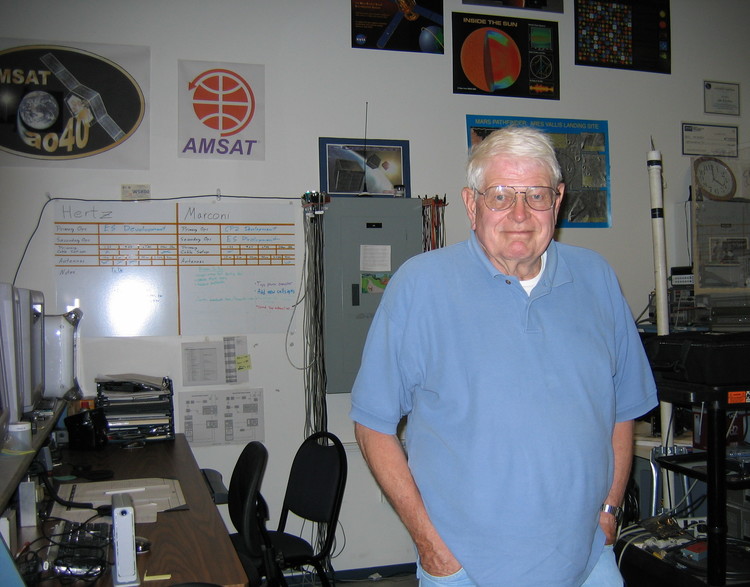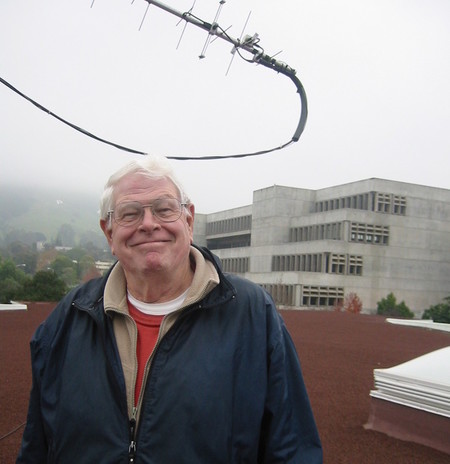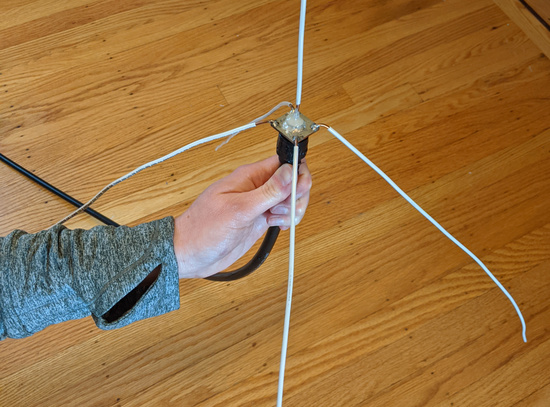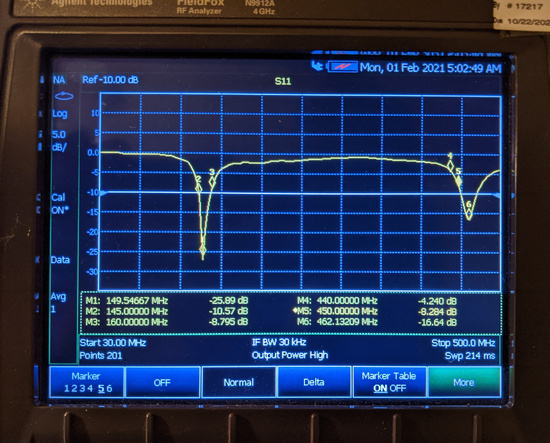I recently moved, and while packing up boxes I found my FunCube Pro+ receiver dongle. One of the many Pandemic Positives is that I have a lot of free time on my hands now, so I thought I would see if I could receive amateur satellites with this. Perusing the AMSAT live Oscar satellite status page, the only recently-launched CubeSat I could receive with the FunCube Pro+ dongle is AO-95, also known as Fox-1Cliff. And even then, the satellite appeared to be in Safe mode, with its transponder not working due to a failed receiver.
Fox-1Cliff is named for Cliff Buttschardt K7RR, who was the amateur radio mentor for the PolySat project at Cal Poly. He was also heavily involved with AMSAT, ARRL, and Project Oscar, which is another amateur satellite organization that launched the first OSCAR satellites back in the early 1960s. He passed away in July 2006.
I was an undergrad at Cal Poly from 2002-2008, and he was a constant presence in the lab. Cliff, along with Ed English W6WYQ (SK), mentored the Cal Poly students in all aspects of satellite design, build, and test. In many ways, building the early OSCAR satellites was a lot like building CubeSats today, with tight deadlines, rapid design iteration, not enough money, and flying new components that haven't been flight tested. As a ham radio operator, he also helped us build the two earth stations on the roof of the satellite lab.
Cliff also had a satellite station at his house in Morro Bay, and was active on many of the satellites. Occasionally, when a tropospheric duct opened, we pointed the satellite antennas down toward the horizon and were able to make contact with stations on Hawaii on 432 MHz sideband. Only 3,700 km away!
Fox-1Cliff is the third satellite in the Fox-1 satellite series. Started by AMSAT VP of Engineering Tony Monteiro AA2TX (SK), the Fox satellite program was a quick way to get a transponder on orbit. The NASA ELaNa program was giving away free launches for educational CubeSats, and realizing that AMSAT didn't have the money to launch any more microsatellites like AO-51, he jumped on the opportunity. The first two satellites of this program, Fox-1A and Fox-1B, were launched thru ELaNa.
Fox-1Cliff was launched on a Falcon 9 rocket from Vandenberg Air Force Base in California on December 3, 2018, as part of the SpaceFlight SSO-A mission.
The FunCube Pro Dongle
Designed by AMSAT-UK in 2010, revised a few times, and still available for purchase today, the dongle was the first cheap software-defined radio. It was built as a low-cost receiver for the FunCube series of satellites built by AMSAT-UK. While some might argue that ~$200 USD is not cheap, it was significantly cheaper than any other SDR available on the market in 2010.
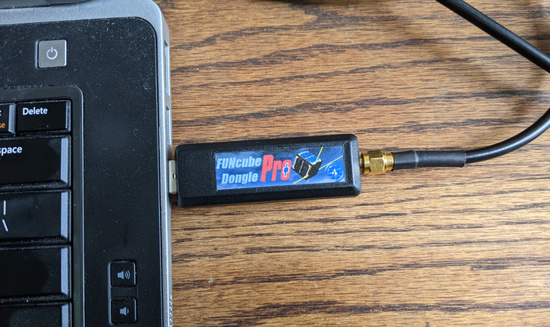
In comparison to the more recent RTL SDR dongles that send raw IQ samples over the USB link, the FunCube dongle uses USB audio as the interface. This is nice because there are many software soundcard modems/TNCs that accept audio input for packet decoding, and you can just point those programs at the fake FunCube USB soundcard. The bandwidth is limited to 192 kHz.
Building the Antenna
The antenna I mostly use for amateur radio is a Diamond X-50NA. However, it's not really a great satellite antenna because the 5/8 wave design pushes the radiation pattern close to the horizon. This is good for talking to terrestrial stations, but not good for satellites straight overhead.
Since the 2m amateur satellite band (~145 MHz) is close to AIS frequencies (~160 MHz), I decided to combine these two services and design a 1/4 wave ground plane antenna that receives both frequencies. And since 1/4 wave antennas have a higher takeoff angle, 1/4 wave antennas receive satellites better than 5/8 wave antennas. More information can be found in the ARRL Handbook.
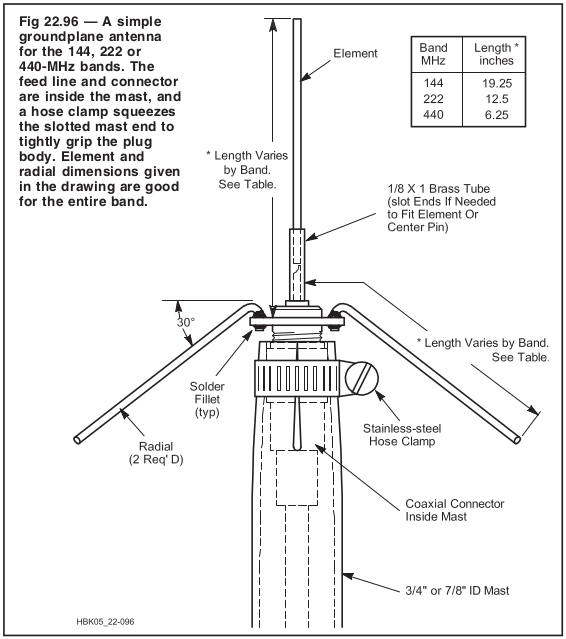
The vertical element is about 18 inches long, and the radials are just over 20 inches long. The white semi-transparent goop at the base of the vertical element is hot glue for waterproofing. Bulkhead N connectors are not waterproof on the solder side, so I was worried about water getting in around the center conductor area and running into the coax. Once water gets into coax cable, it just wicks thru the inside and ruins the coax, causing RF problems along the way. And good coax is expensive, much more expensive than this antenna I built!
N connectors are nominally water resistant from the outside, but not from water ingress along the center pin. For temporary use, I tape the connector up with two layers of electrical tape, as seen in the image above. For a more permanent solution, 3M 2228 mastic is a great solution.
This S11 plot shows that I successfully trimmed the antenna to a center frequency of 149 MHz, so both frequencies are received well by this antenna (lower is better on this plot). You can also clearly see the 3rd harmonic up at 462 MHz. Not quite 3 x 149, but close enough!
One trick to increasing the bandwidth of antennas is to use larger diameter elements. For this antenna I used regular 12-gauge THHN copper wire purchased from a hardware store, the same stuff used for house wiring. While the thicker gauge wire also helps the longer antenna elements keep their shape, THHN copper is very soft and flexible, so I should have used much stiffer copper-coated steel wire.
Installing and running FoxTelem
FoxTelem is written by Chris Thompson AC2CZ/G0KLA. It runs in Java, so installation and running it is easy as long as your java environment is on the newer side. It includes excellent documentation, and there are several tutorials on his website.
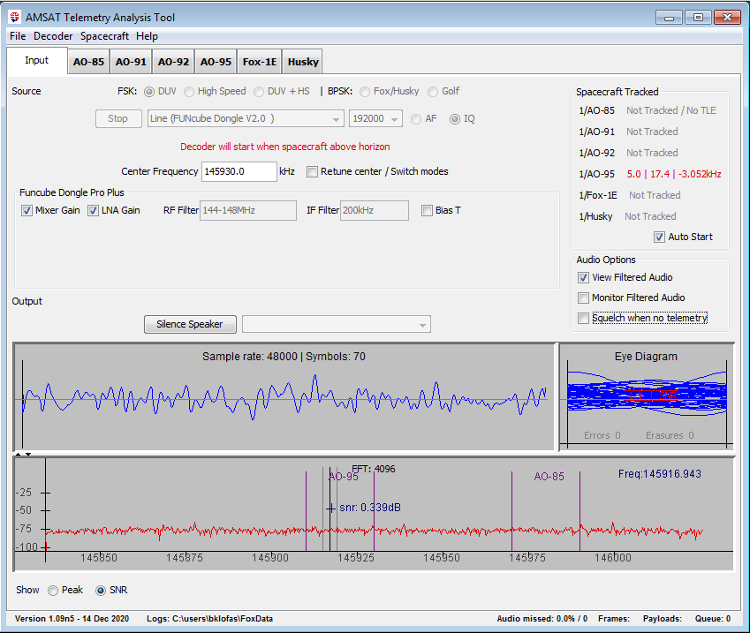
Within the software you can select the different satellites to track and decode. In Feb 2021, the only satellite that is still operational is Fox-1Cliff, so that is what I'm tracking. The spectrum display along the bottom shows the real-time 192 kHz slice of spectrum, which is wide enough for the entire 2m Amateur satellite band. If you have a RTL SDR dongle, FoxTelem can also use that in place of the FunCube dongle.
Every two minutes, Fox-1Cliff transmits some telemetry and an audio message saying "Fox-1Cliff Safe Mode." The voice is Tony Monteiro AA2TX's daughter Veronica. Download.
Unfortunately, my antenna setup is just not quite good enough to decode the Data Under Voice (DUV) telemetry. I need to add an LNA, or upgrade to a directional antenna to increase my system performance.
